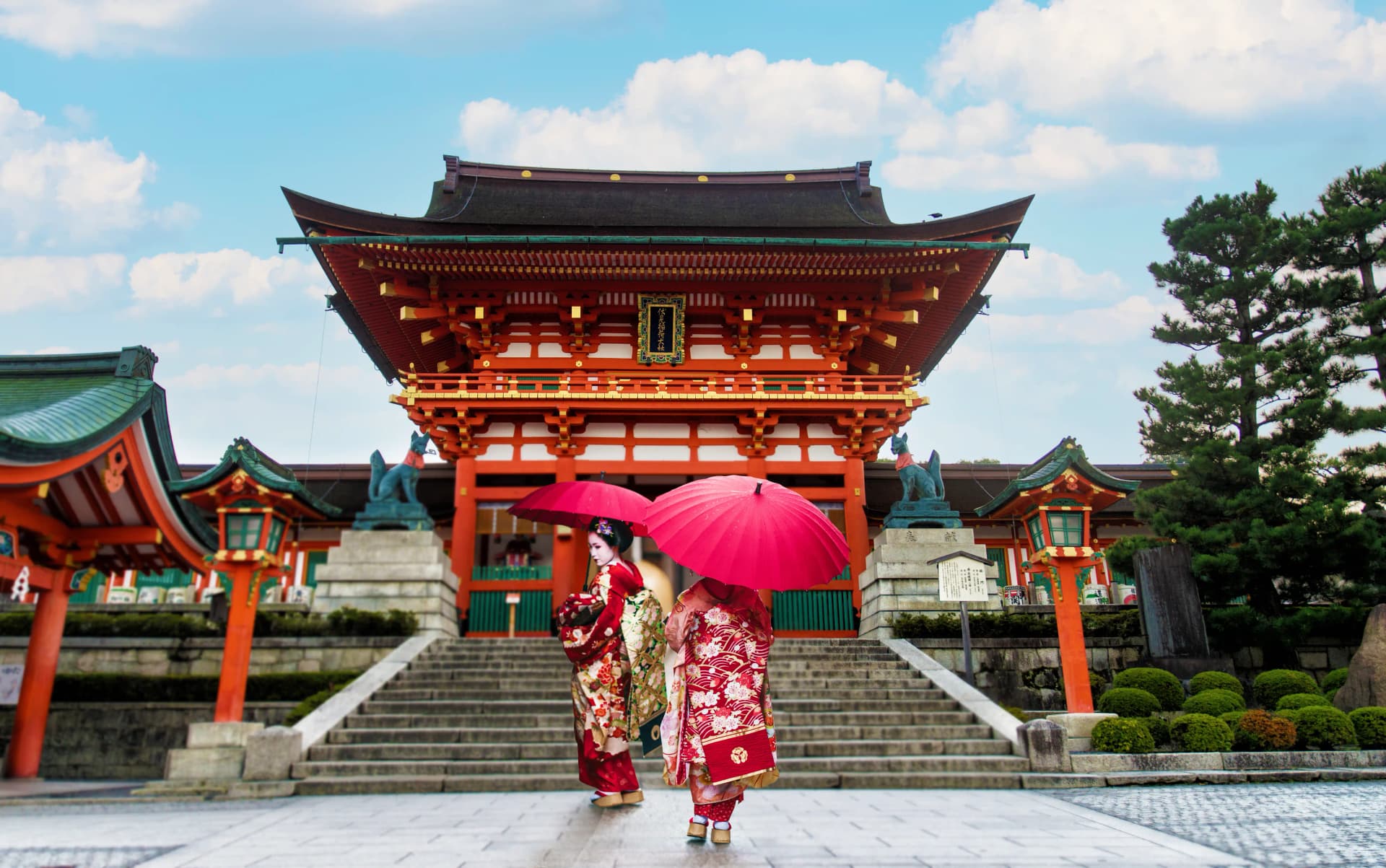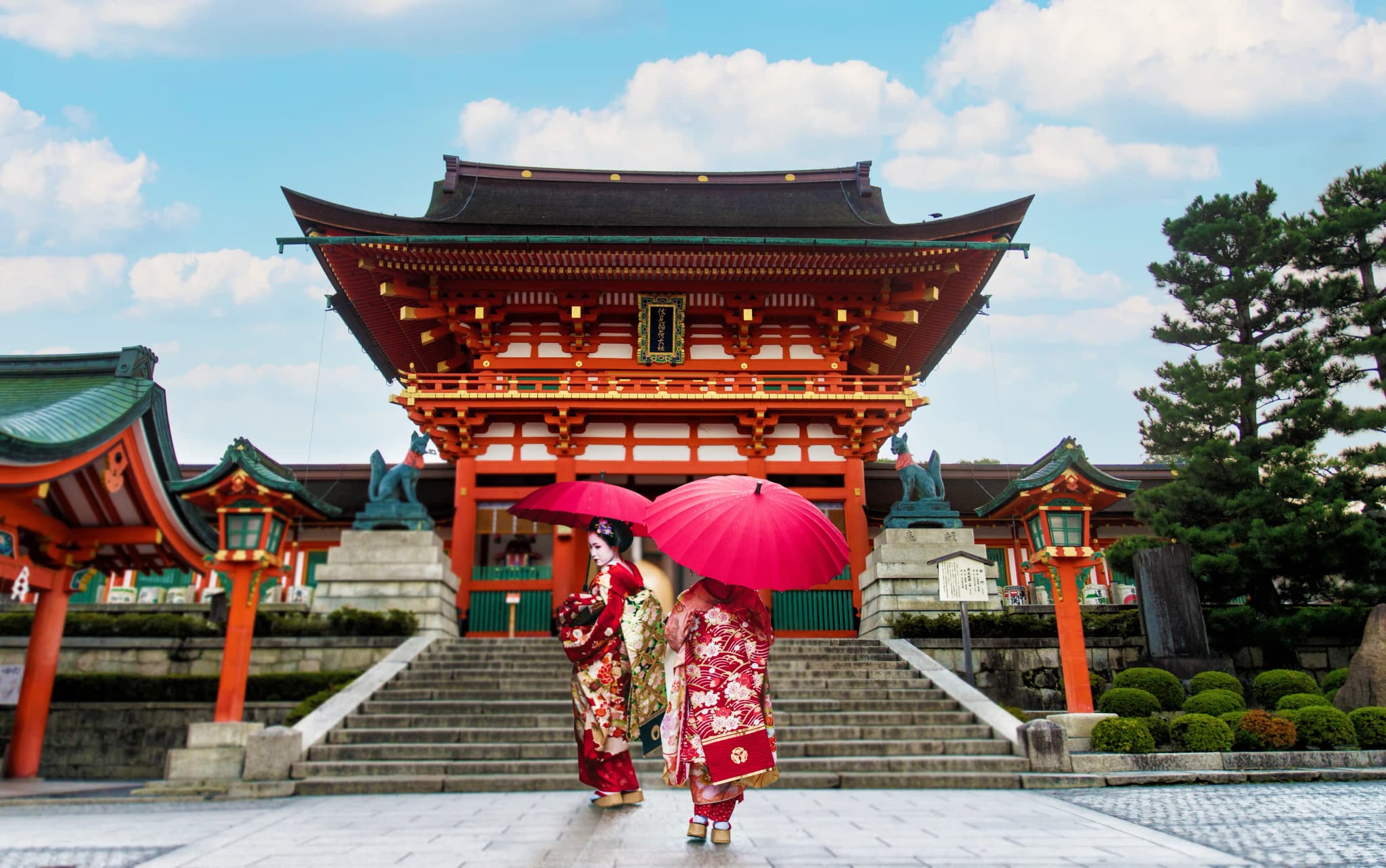
6 Sacred Temples in Kyoto To Fulfill Your Cultural Adventure
Kyoto, Japan’s cultural heart, is home to some of the most breathtaking temples and shrines in the world. For first-time visitors, navigating the city’s rich spiritual heritage can feel overwhelming, but also incredibly rewarding. From golden pavilions to serene rock gardens and centuries-old wooden halls, each site offers a glimpse into Japan’s history, architecture, and Zen philosophy. This guide will introduce you to Kyoto’s must-see temples and sacred spaces, helping you make the most of your journey through this timeless city.

6 Sacred Temples in Kyoto You Should Not Miss
Kinkaku-ji (Golden Pavilion)
- Address: 1 Kinkakujicho, Kita Ward, Kyoto, 603-8361, Japan
- Opening Hours: 9 am to 5 pm
Kinkaku-ji, also known as the Golden Pavilion, is one of Kyoto’s most iconic landmarks and a must-see for first-time visitors to Japan. Originally built in the late 14th century as the retirement villa of shogun Ashikaga Yoshimitsu, it was later transformed into a Zen Buddhist temple. Today, its top two floors gleam with gold leaf, casting a radiant reflection across the still waters of Kyoko-chi, or "Mirror Pond." The temple’s elegance is matched by its tranquil gardens, where paths wind through manicured landscapes and offer peaceful views. A visit here blends history, spirituality, and natural beauty in one unforgettable experience.

Fushimi Inari-taisha
- Address: 68 Fukakusa Yabunouchicho, Fushimi Ward, Kyoto, 612-0882, Japan
- Opening hours: Always
Fushimi Inari-taisha is one of Japan’s most photographed landmarks—and for good reason. Located at the base of Mount Inari in southern Kyoto, this famous Shinto shrine is best known for its seemingly endless path of bright vermilion torii gates. These gates, donated by worshippers, form a striking tunnel that winds through lush forest up the mountain.
The walk is both peaceful and cinematic—film lovers may recognize it from Memoirs of a Geisha (2005). As you ascend, you’ll pass smaller shrines, fox statues (messengers of the god Inari), and scenic overlooks. Along the approach to the shrine, you'll find stalls selling traditional snacks and charming souvenirs—perfect for a quick rest or memento.

Ryoan-ji Temple
- Address: 13 Ryoanji Goryonoshitacho, Ukyo Ward, Kyoto
- Opening Hours: 8 am to 5 pm
If you're craving a moment of stillness in your Kyoto journey, Ryoan-ji Temple offers the perfect escape. Famous for its Zen rock garden, this UNESCO World Heritage Site invites quiet reflection rather than grand displays. The garden’s minimalist design features fifteen carefully placed stones set in raked white gravel, a composition that has puzzled and inspired visitors for centuries.
Unlike the ornate gold of Kinkaku-ji or the vibrant torii of Fushimi Inari, Ryoan-ji’s beauty lies in its simplicity. As you sit along the wooden veranda and gaze out at the garden, you may notice that only fourteen rocks are visible from any one vantage point, which is an intentional design meant to evoke contemplation.

Kiyomizu-dera Temple
- Address: 1 Chome-294 Kiyomizu, Higashiyama Ward, Kyoto, 605-0862, Japan
- Opening Hours: 6 am to 5:30 pm
Perched on the eastern hills of Kyoto, Kiyomizu-dera Temple offers sweeping views of the city from its famous wooden stage. Supported by massive pillars, this historic hall extends over the hillside, giving visitors a stunning vantage point, especially in autumn, when the surrounding maple trees burst into vibrant shades of red and gold.
A UNESCO World Heritage Site, Kiyomizu-dera is not only a visual highlight but also home to spiritual traditions. Within the temple grounds lies Jishu Shrine, dedicated to love and matchmaking. Here, hopeful romantics can try walking between two "love stones" with their eyes closed—success is said to bring good luck in finding a partner.

Tofuku-ji Temple
- Address: 15 Chome-778 Honmachi, Higashiyama Ward, Kyoto, 605-0981, Japan
- Opening Hours: 9 am to 4 pm
Tofuku-ji Temple is a must-visit for those interested in Japan’s rich architectural and spiritual heritage. Located in southern Kyoto, this sprawling Zen Buddhist complex was founded in 1236 and belongs to the Rinzai sect. Though it's one temple by name, Tofuku-ji is home to 25 sub-temples, each offering its own quiet corner of reflection.
The temple grounds feature one of Kyoto’s most exquisite Zen rock gardens, blending raked gravel with carefully placed stones and moss. But perhaps its most remarkable feature is the Sanmon Gate—the oldest of its kind in Japan and a designated National Treasure. The temple also houses the country’s oldest Zen meditation hall, adding deep historical and cultural significance to your visit.

Heian Shrine
- Address: 97 Okazaki Nishitennocho, Sakyo Ward, Kyoto, 606-8341, Japan
- Opening Hours: 6 am to 5 pm
Though relatively young by Kyoto standards, Heian Shrine is a stunning blend of cultural homage and natural beauty. Built in 1895 to commemorate the 1100th anniversary of Kyoto’s founding as Japan’s imperial capital, the shrine pays tribute to the city's early history. Its architectural design mirrors the ancient Chodoin—the central government palace of the Heian period—creating a vivid connection to Kyoto's imperial past.
One of the shrine’s most captivating features is its expansive Japanese garden, spanning over 30,000 square meters. In spring, the garden transforms into a sea of soft pink, as weeping cherry blossoms (shidarezakura) bloom across the grounds, drawing crowds from near and far.

Articles for you

5 Best UNESCO World Heritage Sites in Japan to Explore
Japan is a land where ancient tradition meets natural beauty—think tranquil bamboo groves, vibrant summer festivals, and centuries-old villages tucked into misty mountains. Despite the toll of natural disasters and historical conflicts, many of the country’s heritage sites have endured, making them all the more precious.
Recognized by the United Nations Educational, Scientific and Cultural Organization (UNESCO), these sites are protected for their cultural, historical, and natural significance. Japan is home to 26 UNESCO World Heritage Sites, spread across its main islands and extending to the subtropical Okinawan archipelago. From sacred Shinto shrines and Buddhist temples to time-preserved samurai towns and primeval forests, each site offers a unique window into the soul of Japan.

8 Hidden Gems in Japan to Visit In Your Next Adventure
Japan may seem compact on the map, but it offers a vast and varied travel experience. With 47 unique prefectures, each shaped by its history, geography, and traditions, even seasoned locals haven’t explored it all. While iconic cities like Kyoto, Osaka, and Sapporo deserve the spotlight, they often overshadow Japan’s lesser-known treasures. Beyond the bustling metropolises, you’ll find art-filled islands in Kagawa, serene hot spring retreats in Yamagata, and the charming, fairy-tale-like thatched-roof houses of Gifu. This guide uncovers eight underrated prefectures that offer authentic experiences, cultural richness, and natural beauty, without the crowds. If you’re planning your next trip to Japan, these off-the-beaten-path destinations deserve a spot on your itinerary.

Spring in Japan: Explore Cherry Blossom Season 2025
Japan celebrates cherry blossoms unlike any other country. Each spring, this island country changes into a pastel dreamscape, attracting visitors worldwide. Cherry blossoms (or better known as sakura) are more than just seasonal blooms, as their beauty has been woven into every corner of Japanese culture. For centuries, these delicate pink petals have symbolized the fleeting beauty of life, inspiring poetry, art, and cherished traditions.
Japan has hundreds of cherry tree species, the most iconic being Somei Yoshino. These trees bloom across the country, from the southern islands of Kyushu in March to the cooler regions of Hokkaido in May, creating a wave of pink that moves from south to north. The arrival of the cherry blossoms is met with nationwide celebrations. Locals and tourists alike gather in parks for hanami (flower-viewing) picnics, where they enjoy seasonal foods, traditional music, and the company of loved ones beneath the blooms.

Discover The 7 Most Beautiful Japanese Gardens In Tokyo
Tokyo may be known for its futuristic skyline and fast-paced city life, but serenity isn’t far away. Tucked between skyscrapers and bustling streets, you’ll find tranquil escapes in traditional Japanese gardens, the living works of art that blend nature, philosophy, and design.
Japanese garden design is a centuries-old cultural practice, deeply influenced by Zen Buddhism and the aesthetics of wabi-sabi—the appreciation of imperfection and impermanence. Each garden is a carefully composed scene where stone, water, plants, and crafted structures come together in harmony. These elements beautify the space and symbolize deeper meanings tied to the natural world and human experience.
Features like koi-filled ponds, tea houses, and stone lanterns invite quiet reflection and offer a visual dialogue with the seasons. No two gardens are alike. Their asymmetrical layouts and seasonal themes reflect the transient beauty of spring blossoms, summer greens, autumn leaves, and winter stillness.
.webp&w=640&q=75)




